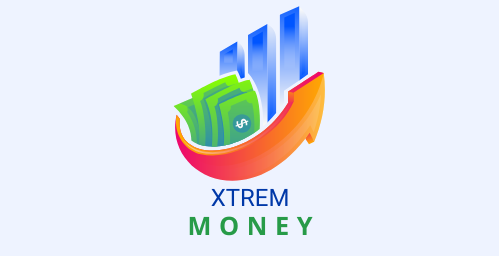Table of Contents
Are you exploring investment options to grow your wealth in India? Open-end funds are among the most flexible and investor-friendly choices available. This detailed guide explains the fundamentals of open-end funds, their working mechanism, differences from closed-end funds, advantages and disadvantages, and answers to frequently asked questions—all in the Indian context. By the end, you’ll know if open-end funds are the right choice for your portfolio.
What Is an Open-End Fund?
An open-end fund is a type of mutual fund that issues shares to investors and allows them to redeem those shares at their current net asset value (NAV). Unlike other investment vehicles, open-end funds don’t have a fixed number of shares; instead, they expand or contract based on investor demand.
Example: Imagine a fund manager creates a fund with an initial investment pool of $10 million. As more investors buy shares, the pool grows, and the manager invests the additional capital in accordance with the fund’s strategy.
How an Open-End Fund Works
Open-end funds are structured to allow continuous buying and selling of shares. Their NAV is calculated daily, based on the total value of the fund’s assets divided by the number of outstanding shares.
Key characteristics include:
- Shares are purchased directly from the fund.
- NAV changes daily based on market conditions and fund performance.
- No cap on the number of shares issued.
Example: If an open-end fund holds assets worth $500 million and has 10 million outstanding shares, its NAV is $50 per share.
Difference From Closed-End Funds
Open-end funds and closed-end funds are often confused, but they have distinct differences:
| Feature | Open-End Funds | Closed-End Funds |
| Share Issuance | Unlimited shares issued | Fixed number of shares |
| Trading Location | Purchased from and sold to fund | Traded on stock exchanges |
| NAV | Determined daily | Can trade at a premium/discount to NAV |
Example: A closed-end fund might issue 1 million shares at launch and trade on an exchange, where its market price fluctuates independently of its NAV.
Pros and Cons of Open-End Funds
Every investment has its advantages and disadvantages. Here’s a look at the pros and cons of open-end funds:
Pros:
- Liquidity: Investors can buy or redeem shares daily at NAV.
- Diversification: Funds typically hold a mix of assets, reducing risk.
- Professional Management: Managed by experienced fund managers.
Cons:
- Management Fees: Fees can erode returns over time.
- Impact of Redemptions: Large redemptions may force the sale of assets, potentially harming fund performance.
- Market Dependency: Performance is tied to market conditions.
Example: An open-end equity fund might offer diversification across 50 stocks listed on NSE and BSE, but if the market declines, the fund’s value will likely decrease as well.
Real-World Example of an Open-End Fund
Consider SBI Blue-chip Fund. It’s an open-end equity mutual fund that primarily invests in large-cap companies in India. Investors can buy shares directly from SBI Mutual Fund at the NAV, which changes daily based on the market value of the underlying stocks.
Key Metrics:
- Assets Under Management (AUM): Over ₹40,000 crores.
- Expense Ratio: Around 1.3% for regular plans.
- Performance: Historically aligns with the large-cap segment of the Indian stock market.
Can You Sell Back Shares of an Open-End Fund?
Yes, one of the defining features of open-end funds is the ability to sell shares back to the fund at NAV. This process, known as redemption, ensures liquidity for investors.
Example: If you own 100 shares of an open-end fund with a NAV of ₹75, you can redeem them for ₹7,500 (minus any applicable exit load).
Are Open-End Funds Regulated?
Open-end funds in India are heavily regulated to protect investors. These funds are governed by the Securities and Exchange Board of India (SEBI) and must comply with its guidelines.
Key Regulations:
- Transparency: Regular disclosure of holdings and performance.
- Liquidity Requirements: Must maintain sufficient liquidity to meet redemptions.
- Fair Valuation: NAV must accurately reflect the value of the fund’s assets.
Do Open-End Funds Pay Dividends?
Yes, many open-end funds pay dividends, depending on the income generated by their underlying assets. Dividends can be reinvested or paid out to investors, depending on their preferences.
Example: An open-end bond fund in India might distribute interest income as dividends, while an equity fund could pay dividends from the profits of its underlying stocks.
What Impact Do Investor Redemptions Have on an Open-End Fund?
Investor redemptions can significantly impact open-end funds. Large-scale redemptions may force fund managers to sell assets to raise cash, potentially affecting the fund’s performance and remaining investors.
Example: During a market downturn in India, if many investors redeem shares, a fund might need to sell stocks at a loss, reducing overall NAV.
Conclusion
Open-end funds offer flexibility, liquidity, and diversification, making them a popular choice for Indian investors. However, they come with challenges like management fees and sensitivity to redemptions. By understanding how these funds work and their implications, you can make informed investment decisions. Whether you’re a seasoned investor or a beginner, open-end funds can be a valuable addition to your portfolio—provided they align with your financial goals and risk tolerance.
